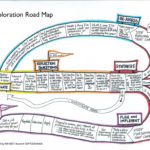| By Kapson Y. Lee, New America Media
NEW YORK – May 7, 2006 – A prominent New York art museum is posthumously honoring Nam June Paik, an avant-garde Korean-born artist this month. The Museum of Modern Art (MoMA) in New York is holding an exhibition, “In Memoriam: Nam June Paik,” through May 22. Paik died at the age of 73 in New York in January. According to MoMa in their announcement of the exhibition, Paik’s innovative work shaped the early history of video art and contributed to the foundation of MoMA’s media collection since 1968 when his work, “The Machine as Seen at the End of the Mechanical Age,” was first shown at the museum. Composer, performer, and artist widely considered the inventor of video art, Paik was one of a kind not only as a pioneer artist but as a person of many dimensions. Paik’s career spanned half a century in three continents and his works – ranging from installations of flickering television monitors to laser beams – are seen in museums and corporate lobbies around the world. He coined the term “electronic superhighway” in 1974 when he grasped the essence of global communications and possibilities of technologies barely known. Though he was an avant-garde artist, whose work seemed outrageous at times, he also was one of the most traditional Korean men I have ever met. That combination, I believe, is what made Paik so engaging – both as an artist and as a man. I first became acquainted with Paik in the early 1980s, when the Whitney Museum in New York was doing a retrospective of his work. His works – featuring musical compositions, performances and TV monitors – seemed unbelievably wild and monstrous. In one performance he broke a piano. In another, “TV Bra for Living Sculpture,” cellist Charlotte Moorman made music with two tiny television screens covering her breasts. I didn’t know quite what to make of him but he put me at ease during my first telephone interview. Paik, who was 50 at the time, was friendly and candid. As soon as he learned that I was from Los Angeles, he inquired about a woman he had known from his high school days in Seoul. “In Los Angeles, there is Eun-kyung Lee (not hers real name) who married Young-chol Kim,” he said. “How is she doing?” I recognized their names because they were well known in the Los Angeles Korean community. Throughout the interview Paik was personable and honest. And, he made sure he was in charge of the interview. I wanted to conduct the interview in English as I was writing for an English language publication, but he kept answering in Korean. Several times during the interview, I asked him, if he could speak in English, so I wouldn’t have to worry about translating into English, but he was determined to carry on the entire interview in Korean. As I listened to him speaking in Korean, I felt as if he was truly enjoying his mother tongue like an art form. He rarely mixed his Korean with foreign words except for such inevitable words as “video art” and “robot.” Although he had lived outside Korea and worked in non-Korean artist circles for more than 30 years, he spoke unadulterated, traditional Korean spoken by indigenous Seoulites. After that introduction, I finally met Paik in person in December of 1983 in New York. He was working on his ground-breaking telecast, “Good Morning Mr. Orwell,” which attempted to repudiate George Orwell’s futuristic novel, “Nineteen Eighty-Four.” The point Paik was trying to make was that 1984 would usher in a new era, abounding in freedom and technology that would help humankind break cultural barriers. When I phoned him, he told me that he was too busy to see me. He said he needed every minute he had to do last minute preparation for the telecast. I refused to take a no for an answer. I pleaded with him repeatedly. Finally, he relented. He told me to come to a Soho cafe where he usually had his breakfast. At the promised time, Paik appeared, looking sleepy. He ordered his breakfast and ate briskly, while answering my questions. Then, he got up from the table to leave. I needed more time to get a decent story out of him. So, I asked him to show me the way to the nearby subway station. Initially, he frowned. Then, he agreed to accompany me to the station. When we arrived at the station, he reached into his pocket. Without a word he took out a token and handed it to me, and walked away. “Good Morning Mr. Orwell” mobilized top-level artists from around the world, including Korean dancer, Hi Ah Park. He deftly incorporated traditional Korean art into the ultra-modern cosmopolitan setting, where he collaborated with such giants as composer John Cage and choreographer Merce Cunningham. In his many works he often infused Korean themes. One involved a set of eight-panel prints. Each 30 by 22 inch panel was a different color – black, brown, yellow, deep blue, pink, red, light blue and green – and centered on a robot which was synthesized with television monitors. The monitors highlighted calligraphy of different languages that carried his cultural, social and political views. Two prints contained messages in Korean: The yellow panel said, “Does revolution justify violence?” and the deep blue one stated, “Cultural revolution is preceded by artistic revolution.” Paik carried his devotion to Korean tradition even to his own funeral. Photos of his funeral, attended by such luminaries as Yoko Ono and video artist Bill Viola, showed Paik, lying in his coffin, wearing a traditional Korean garment of deep blue, lined in light green. In his life and work, he had one foot in traditional Korea and another in modern America. Indeed, both of his worlds met and flowered.
|
||
|










